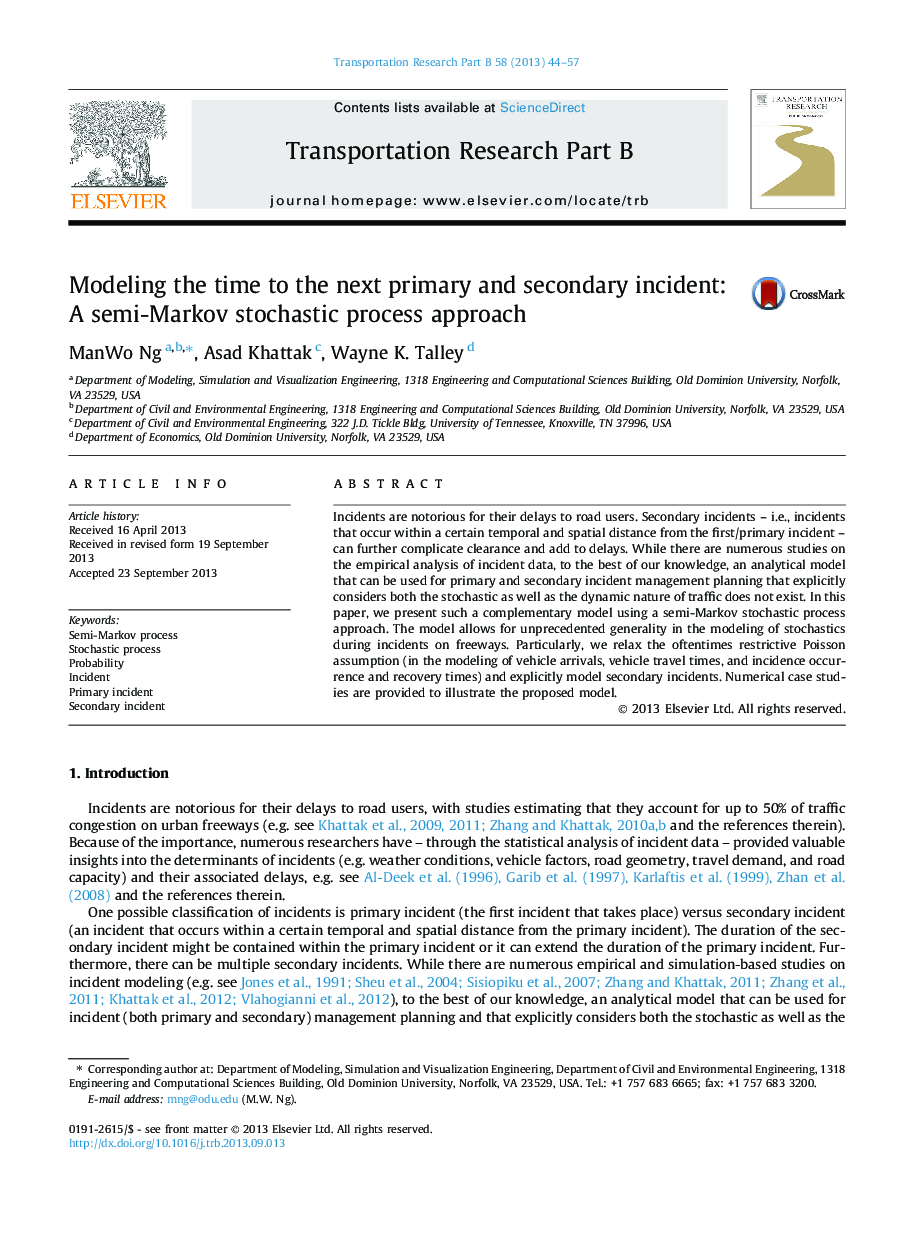| Article ID | Journal | Published Year | Pages | File Type |
|---|---|---|---|---|
| 1132042 | Transportation Research Part B: Methodological | 2013 | 14 Pages |
•An analytical stochastic process model is presented to model incidents.•Proposed semi-Markov process models both primary and secondary incidents.•Model predicts time to next primary and secondary incidents.•Complements statistical analysis studies in incident literature.
Incidents are notorious for their delays to road users. Secondary incidents – i.e., incidents that occur within a certain temporal and spatial distance from the first/primary incident – can further complicate clearance and add to delays. While there are numerous studies on the empirical analysis of incident data, to the best of our knowledge, an analytical model that can be used for primary and secondary incident management planning that explicitly considers both the stochastic as well as the dynamic nature of traffic does not exist. In this paper, we present such a complementary model using a semi-Markov stochastic process approach. The model allows for unprecedented generality in the modeling of stochastics during incidents on freeways. Particularly, we relax the oftentimes restrictive Poisson assumption (in the modeling of vehicle arrivals, vehicle travel times, and incidence occurrence and recovery times) and explicitly model secondary incidents. Numerical case studies are provided to illustrate the proposed model.
